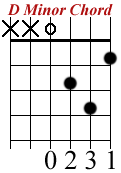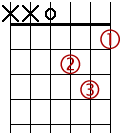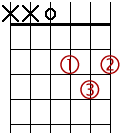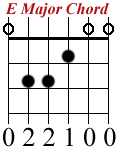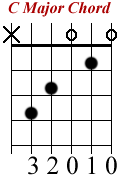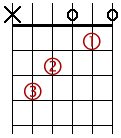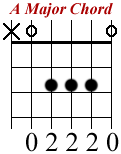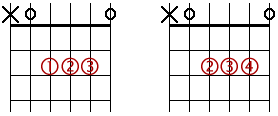Learning to play the Acoustic Guitar
On this site you will find free basic guitar lessons, chords and easy acoustic songs to help you learn the acoustic guitar. I started up this blog in September 2008 because after learning the acoustic guitar and playing it for two years I wanted to write some of the basics and help others learn the acoustic guitar like I did. I do have to mention that after being taught some of the absolute basics, I actually learned to play the guitar entirely from lessons online and a great course that I bough.
If you are new to the guitar then I suggest first that you learn the basics, like the parts of the guitar and then move onto to basic techniques like the hammer-on and pull off etc. Once you learn all the open chords and can play them and switch between them easily then you can try out some easy guitar songs. Learning the guitar is hard work but once you have its absolutely fantastic. I hope you find the information on this site useful and as time goes on Ill be adding more lessons and more songs to help you learn acoustic guitar.
learning the acoustic guitar
Once you have seen and understood the basics that i have on this site and you really want to take it a step further then i recommend you work your way up to the intermediate and advanced lessons through a structured course. You can try the one i used which took me from a scratchy player getting confused and frustrated with all the “free” advanced lessons out there. You can check out the Jamorama review i wrote and see if that program works out for you.
Open Chords
In this post we’re going to look at open guitar chords. Chords are formed by placing your fingers on one more frets and strumming the guitar. Open guitar chords are the most basic and fundamental of everything you learn when you start off learning to play a guitar . This is definitely the first thing every guitarist should learn because it is the foundation for so many songs, you would be surprised how many really popular songs are just three open chords. I have to warn you though, they are not easy to play. It takes a lot of time and a lot of practice to be able to play well and change between them quickly. It seems tough at first but keep playing and eventually it becomes much easier until you can play them and switch between them without even looking at the guitar.
The best advice to start off with is to put your fingers into these positions and playing the chord, play it once, play it twice and get a feel for it, and try to keep your fingers away from the other string that way you can minimize any additional noise. This will definitely take some practice. Chords like C, E, Em, A, Am and Dm aren’t too bad and it shouldn’t take you too long to get used to them. Just remember, practice is everything.
When you are eventually used to playing some of these chords, find some easy guitar songs and try playing along or just strumming as practice.
Learn guitar chords (Major):
The C Major Chord
formed x32010
The E Major Chord
formed 022100
The A Major Chord
formed x02220
The G Major Chord
formed 320003 or 320033
The D Major Chord
formed xx0232
Learn guitar chords (minor):
The E Minor Chord
formed 022000
The A Minor Chord
formed x02210
The D Minor Chord
formed xx0231
The Bend
The bend is the most versatile and useful technique available to guitarists. Very few instruments have the luxury of being able to bend notes. Pianos, trumpets, and saxophones cannot easily bend notes. As my guitar teacher said, “Because guitarists can bend notes, it means they have to bend notes!” The bend is the most complicated introductory technique, because it takes the most practice and coordination to execute correctly, and because there are many types, but with practice it should be easy. Bends are indicated in tab notation as follows:
prebend
1/2 1 1/2 1/2
+ + + + + + + +
e:-----------------|------------------|
B:-7^~~~---7^~~~---|-7^~~r------^7~~r-|
G:-----------------|------------------|
D:-----------------|------------------|
A:-----------------|------------------|
E:-----------------|------------------|
The first bend is a bend of 1/2 step on the second string 7th fret.
The second bend is a bend of 1 step on the second string 7th fret.
The third bend is a bend-and-release of 1/2 step on the second string 7th fret.
The fourth bend is a prebend of 1/2 step on the second string 7th fret, with a release.
The Basic Bend
The first bend shown in the above figure is accomplished by fretting the second string 7th fret (usually with your ring finger), picking the note, and actually pushing the string sideways to bend it. Keep the string pressed firmly against the fret, and make sure you keep your finger on the same fret (don’t slide up or down to a different fret). When the pitch of the string increases by one half step, you have correctly executed this bend. To play the second bend, use the same technique, but bend the string until the pitch increases by one step. The most important part of the bend is making sure you bend to the exact pitch. If you don’t, it will sound awful. It is usually easiest if you fret with your ring finger, but your index and middle fingers can be used as well. This will come with practice.
The Bend-and-Release
The third bend shown in the above figure is a bend-and-release. This is accomplished in the same fashion as a normal bend, but when the release in indicated, you gently release the string and allow it to go back down to the original pitch. Remember to keep the string pressed firmly against the fret while you are doing this.
The Prebend
The fourth bend shown in the above figure is a prebend. This is accomplished a fashion similar to a normal bend. However, instead of picking the note and then bending the string, you bend the string and then pick the note. Prebends are almost always followed by a release, as is shown in the figure. This gives an interesting sound: a note which starts high and bends down as opposed to a normal bend where the note starts low and bends up.
That’s about it for the bend. As you have seen, there are many types of bends and all appear in many different kinds of music. The prebend is the least used, so you don’t need to master it yet, but the others are very useful. And remember, the guitar is blessed by bends, so use them! Keep playin!
The D Minor Chord
Here is how the D minor chord is formed:
Here are the proper finger positions:
The D Major Chord
The D major chord is formed as shown below
Here are the proper finger positions:
The E Major Chord
Now we’re looking at the E major chord. These are the notes you have to hold:
Now the actual finger positions:
The C Major Chord
One my favorite chords is the C major chord and these are the notes you hold.
And these are the proper finger positions.
The E Minor Chord
This is the E minor chord, these are the notes you have to hold:
Finger positions for the E minor chord are shown below
The A Major Chord
Here’s how you form the A major chord, its just three fingers as illustrated below:
The proper finger positions to use for the A major chord are below. The method you choose will depend ultimately on your fingers and hands.
Hammer On
The hammer-on is one of the most widely used techniques for soloing. It is very simple and can be applied in many different ways to many different situations. A hammer-on is indicated in tab notation by this symbol:
+ + e:---------| B:-----5h7-| G:---------| D:-4h6-----| A:---------| E:---------|
The first hammer-on is played on the 4th string from the 4th fret to the 6th fret.
The second hammer-on is played on the 2nd string from the 5th fret to the 7th fret.
The hammer-on’s shown above are accomplished by fretting the desired note with your index finger, picking the note, then hammering your ring finger down onto the desired higher fret. Make sure you keep the index finger down until slightly after you fret the higher note. This is the most important part of the hammer-on: making sure your index finger isn’t moved before you place your ring finger on the higher note. You can also hammer-on with different fingers, and you can work on this as you get better at them.
+ +
e:---------| B:---------| G:-----7h9-| D:-7h8-----| A:---------| E:---------|
For the first, use your index finger to fret the fourth string 7th fret, and your middle finger to hammer-on the 8th fret. For the second, simply move your index finger up a string to the third string 7th fret, and hammer-on with your ring finger.
That’s about it for the hammer-on. They are easy to perform, but do take some practice. The hardest parts are making sure you hold down your index finger until after you fret the higher note with your ring finger. Make sure you try hammering with other fingers, because this versatility is required when performing complex solos later. Good luck with this new technique!


